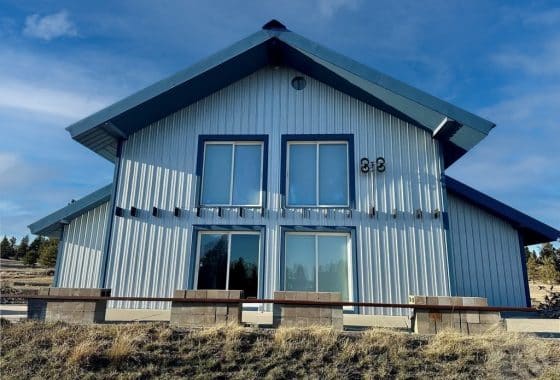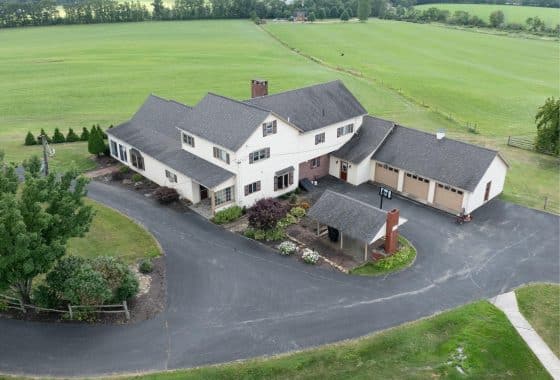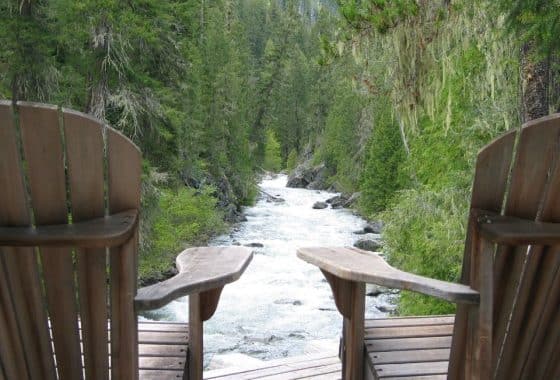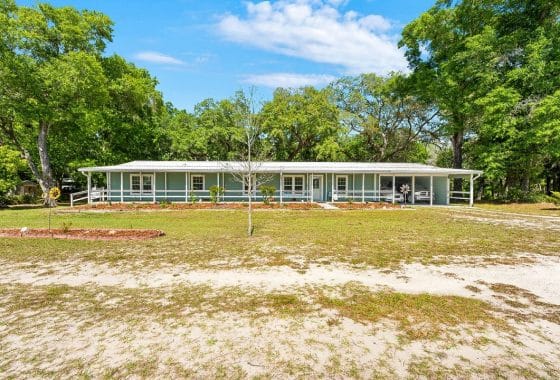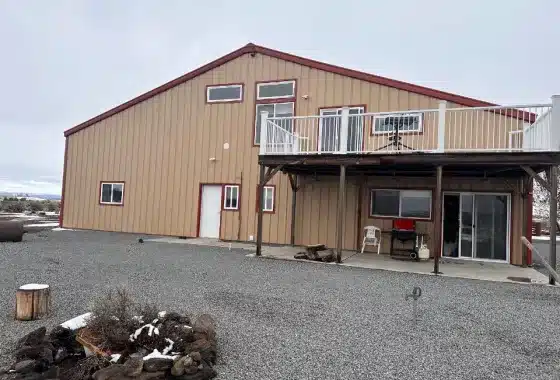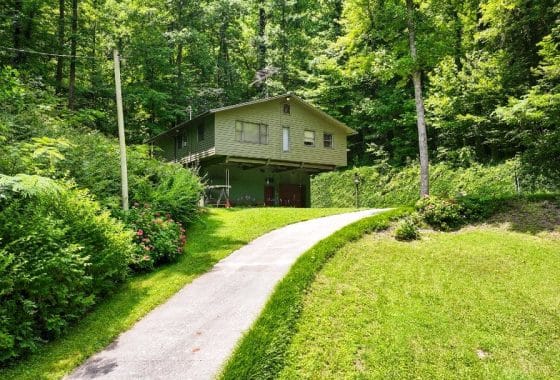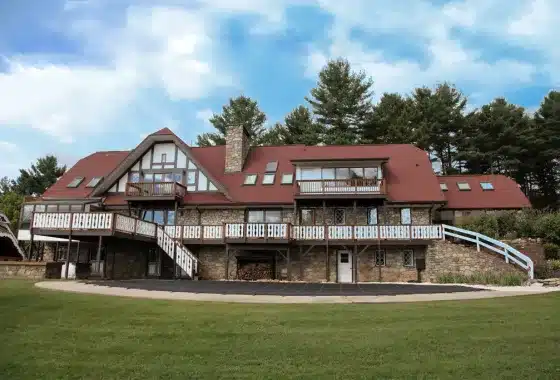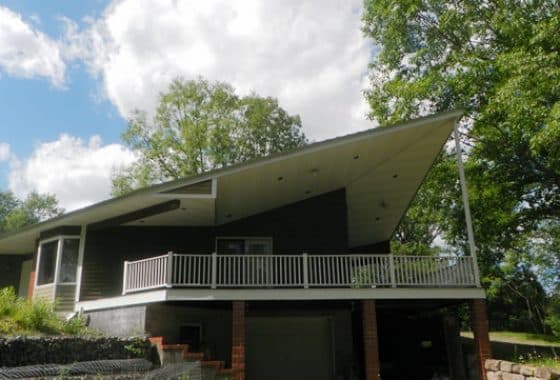Fly-in Homes for Sale
Fly-in homes are a dream come true for the private pilot. Having a landing strip and possibly a hangar is even better!
Fly-in Homes with Separate Hangars
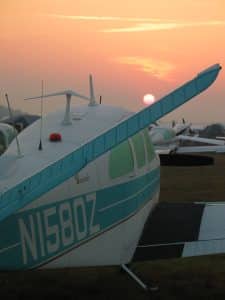
Brenda’s private V-Tail Bonanza airplane has now flown on to distant skies in California.
One of the key decisions for private pilots is deciding where to park their small planes. Having the ability to park inside is a huge plus!
Hangar vs. Parking on the Tarmac
Parking outside exposes planes to the elements. This can add more maintenance expense since external exposure often leads to faster corrosion of metal parts. It also leaves your aircraft vulnerable to theft or vandalism, as there is no secure storage solution when parking outside. Additionally, rain or snow can affect visibility and make it difficult for safe take-offs and landings. In colder months, tying down outside can add hours to preflight due to the need to heat up the engine.
Sheltering Your Aircraft Indoors
Hangars provide shelter from weather conditions. They keep planes safe from potential damage caused by birds or wind gusts while parked on the tarmac. Storing your airplane inside protects it against unexpected repairs due to prolonged exposure to sun and rain over time. Furthermore, hangars keep your aircraft safely tucked away out of sight when not in use.
Having a hangar at your fly-in home is a real plus. Hangars are an essential component for any private pilot, providing a safe and secure home for their aircraft. For small private planes, there is a variety of different types of hangars available to suit specific needs.
Different Types of Hangars
Although not ideal, barns can be converted into hangars and could be your least expensive option for providing shelter for your small plane. If there is flooring, it may need to be reinforced in order to support the weight of the plane. Then install a sliding, rolling, or lifting door that can be secured with locks and chains. Ensure that your airplane can safely be moved in and out, and you are all set!
Metal hangars built especially for aircraft storage offer superior protection. Compared to barns, their rigid construction and strength provides more safety against wind, rain, sleet, or snow. Their size and height can also be customized depending on individual needs and requirements. Hangar sizes range from single-plane hangars all the way up to large multi-aircraft shelters. Additionally, metal hangars offer ventilation systems to keep the interior comfortable no matter what season it is outside.
Though more expensive upfront than barns or tarp shelters, metal hangars are often more cost-effective in the long run due to their durability. They can last much longer than other options while still providing a safe refuge for your small private plane in any weather situation.
Living in a Hangar Home
Hangars can be transformed into amazingly unique residences. Living in a hangar serves a dual purpose offering the best of both worlds: the convenience of having your own private airstrip while still enjoying all the comforts of modern life at home. We’ve had several hangar homes available over the years.
Private Runways & Landing Strips at Fly-in Homes
Having your own runway is a huge benefit! The two main types of landing strips for small planes are grass strips and asphalt runways. Grass strips are generally cheaper to maintain and install, but may require more regular maintenance depending on climate conditions. Asphalt runways tend to be more expensive upfront, but they provide a smoother surface which can reduce wear and tear on the plane and provide better visibility in low light conditions. In addition, asphalt runways have higher load-bearing capacity compared to grass strips, allowing them to be used by heavier aircraft such as turboprops or jets.
There are other runway factors to consider. The type of strip has an environmental impact. There are safety concerns during rain or snow, noise pollution, and regulations related to nearby airports.
Ultimately, private pilots must weigh all these options carefully before making their decision in order to ensure that their chosen landing strip will meet or can be tailored to their needs.
Runway Safety Considerations
As a private pilot, safety is paramount when it comes to selecting a fly-in home. The landing strip should be clear of any debris or obstructions that could endanger the aircraft as well as offer adequate room for a small plane to make a safe transition from the air to the ground. Additionally, it’s important that the landing strip is wide enough to accommodate your make and model of aircraft, as well as any other planes you may need to host on your property.
Aside from the length, width, and condition of the runway, make sure that there are no safety hazards like power lines, towers, or tall buildings in close proximity to where you’re planning on landing.
Trees!
A major consideration when choosing a landing strip is trees, as they can be a safety hazard. Trees can cause turbulence for planes in flight. If located at the end of the runway, this could affect takeoff and landing performance. In addition, trees are more likely to attract birds which presents the risk of bird strikes. Furthermore, trees can block visibility from the pilot’s view during takeoff and landing, leading to possible collisions with other objects or aircraft. In some cases, trees may even need to be removed from the vicinity of the runway in order to ensure safe operations.
In Summary
A fly-in home is an ideal solution for private pilots who want to be close to their aircraft. Even better if the home already has a hangar or a barn that can be converted.

